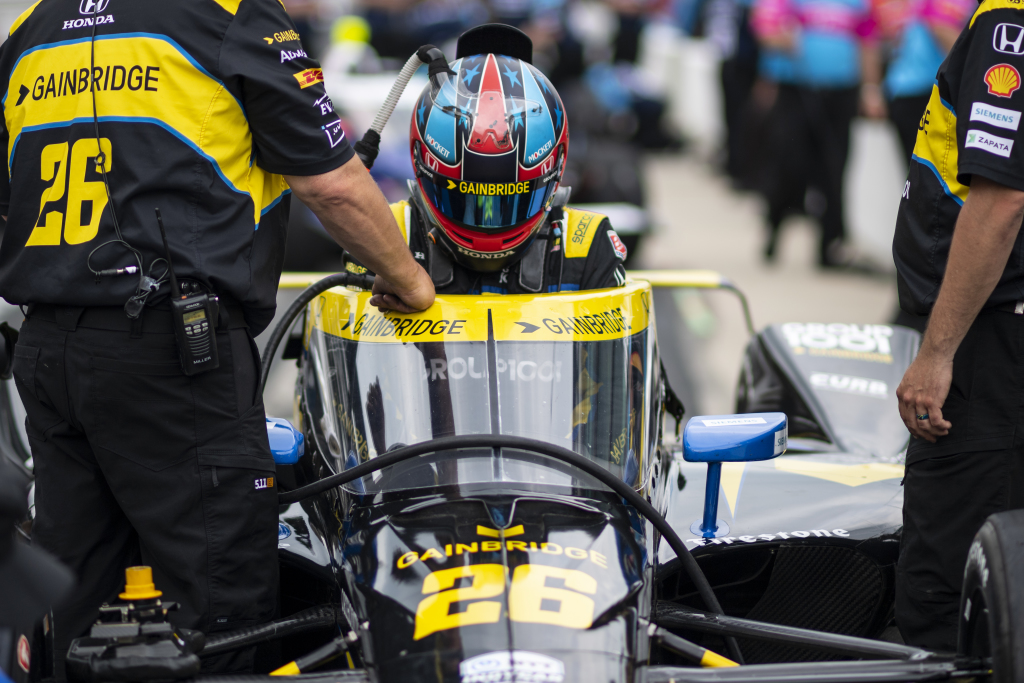The NTT IndyCar Series and its partners at Dallara, Pankl, and PPG are making steady progress on the second-generation aeroscreen that will debut in competition next year.
Lighter than the first-generation driver safety device that was introduced in 2020, the collective efforts of the four parties have come up with an “Aeroscreen 2.0” featuring a new titanium frame that benefits from the latest additive manufacturing to pare weight from the halo that mounts atop the Dallara DW12 cockpits.
“We took the original frame and Pankl used something called ‘topology optimization’ to reduce weight in areas where the stresses are lower,” IndyCar’s Tino Belli told RACER. “It’s 3D-printed, obviously, because there’s a lot of hollow structures in the top frame. If you did subtractive manufacturing, CNC machining, you couldn’t get in there to take all the material away.”
With three seasons of data gathered on impacts to draw from, IndyCar’s partners and the series’ engineering group did studies to find areas where the original aeroscreen is overly strong, and with those lessons in place after the select in-race impacts the frame has received, weight in those areas has been relieved on Aeroscreen 2.0.
“By calculation, it should be 6.8 pounds lighter,” Belli said. “We’re load testing it at Cranfield in the UK [before the end of the month]. So that’s the top frame. The lightweight screen is not quite as far along in its process yet; we intend to start manufacturing hopefully by the middle of August. So with any of these components, their difficulty can’t produce five a week or anything like that. Most of them are about five to eight a month.
“We want for the first test of next year to have 27 ready and then we can fill in the extra supply so we have 66 of them total ready for Indy.”
[lawrence-auto-related count=3 category=1408]
The laminated polycarbonate screen made by PPG will also undergo a number of changes. Where the second-generation Pankl frame will be used at all rounds, the series is planning to implement separate road/street and oval screens, with the current, 9.6-millimeter-thick screen being carried over for all ovals.

When IndyCar goes road racing, a new, thinner screen will be used that will no longer have a heating element sandwiched between its layers. For the sake of improved driver cooling, the final version of the new road racing screen will likely have a pair of rectangular openings cut along the top where the sunshade strip is currently located.
The openings will have ducts affixed on the backside that takes the oncoming air and routes it downward onto the driver.
“So the original thought was just to replace the 9.6-thick polycarbonate with a six-millimeter-thick screen, and then we looked at the ballistic testing that we did and the maintenance side of the screen since it’s been in use and we’ve actually scrapped very few of them,” Belli said. “The 2.0 screen will be lighter, and this duct wraps around the titanium frame. The sun bands will go down a little bit lower and this duct will wrap underneath the titanium and then there’ll be a piece that extends through and turns 90 degrees and pumps air down into the cockpit.”
The new frame will accept the first- and second-generation screens, making changes between road/street races and ovals a breeze.
“We’re aiming for a total weight reduction of 11.2 pounds and are trying to make it close to 12,” Belli added. “We’re going to probably make that ductwork mandatory, and if so, we probably won’t continue to need the topside duct we mandate now when the ambient temperature reaches a specific threshold.”
